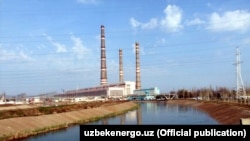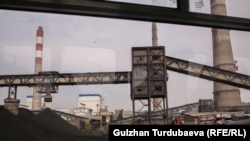Central Asians from western Kazakhstan to southern Tajikistan are suffering from power and energy shortages that have caused hardship and emergency situations affecting the lives of millions of people.
On October 14, several units at three power plants in northeastern Kazakhstan were shut down in an emergency that resulted in a loss of more than 1,000 megawatts (MW) of electricity.
It serves as an example of the kind of power failures that plague the region 30 years after the Central Asian countries gained independence and despite hundreds of millions of dollars being invested in energy infrastructure and power grids.
Some of the reasons for these problems are clear, but with all the money these countries have allocated to their energy sectors and financial help they have received from international financial institutions, it is curious the situation is already so desperate with winter officially still weeks away.
The Current Problems
Three power plants were affected in the October 14 shutdowns of units: Ekibastuz-1, Ekibastuz-2, and the Aksu power plant.
Ekibastuz-1 is the largest power plant in Kazakhstan, capable of generating some 4,000 MW, roughly 13 percent of Kazakhstan’s total power output.
The Kazakhstan Electricity Grid Operating Company (KEGOC) explained the problems resulted partially from malfunctions and repair work, but also from overuse of the system that the government would later say was due to cryptominers, a large number of whom have moved to Kazakhstan recently from China after Beijing banned the mining needed by Bitcoin and other cryptocurrencies.
But between November 8 and 9, rolling blackouts were reported in the East Kazakhstan, North Kazakhstan, and Kyzylorda provinces, as well as the area around Almaty, Kazakhstan’s biggest city, and Shymkent, its third largest city.
People in Uzbekistan say they, too, are facing blackouts that the Energy Ministry described as “short-term outages,” though it has been clear for several weeks that the country will have problems with natural gas supplies this winter.
Kyrgyz President Sadyr Japarov continues to say there won't be any power rationing in Kyrgyzstan this winter, but at the end of September the National Energy Holding Company ordered “restrictions on the lighting of secondary streets, advertisements, and facades of shops, cafes, and other nonresidential customers.”
Many parts of Tajikistan are already experiencing intermittent supplies of electricity.
Even in Turkmenistan, a country with the fourth-largest reserves of natural gas in the world, there were reports of problems with electricity and heating in the capital, Ashgabat.
What Is Going On?
The causes of some of these problems are easy to see.
The population of the region has grown significantly, with the population of Central Asia when the Soviet Union collapsed in late 1991 being some 50 million and today about 75 million.
Kyrgyzstan and Tajikistan are mountainous countries that have long been touted for their hydropower potential and some 90 percent of Kyrgyzstan’s domestically produced electricity and 98 percent of Tajikistan’s come from hydropower.
But a severe drought that struck Central Asia this year has resulted in less hydropower and, in general, less energy for the region.
Tajik authorities have not reported how low the water in the country’s key reservoirs is, but Kyrgyzstan has reported the water level in the reservoir at its Toktogul hydropower plant (HPP) is 11.8 billion cubic meters (bcm), the lowest level in years and far less than the 14.7 bcm of water it had in November 2020.
The Toktogul HPP, with an installed capacity of 1,200 MW, provides some 40 percent of the country's domestically produced electricity, but operating the HPP this winter to generate desperately needed energy brings the risk of leaving water levels at the reservoir critically low next spring and summer when the water is also needed for agricultural purposes.
This year’s drought is something Kyrgyzstan and Tajikistan will have to take into consideration as they plan how to provide power for their growing populations in the future. Hydropower is a desirable option but may be less reliable with the onset of climate change.
Uzbekistan is also feeling the effects of this year’s drought.
According to the International Energy Agency, HPPs account for some 12 percent of Uzbekistan’s generating capacity.
Uzbekistan’s Energy Ministry attributed low water levels at HPPs that have caused a 23 percent decrease in hydropower generation this year.
Kazakhstan and Uzbekistan are the most populous Central Asian countries, and both depend on thermal power plants (TPP) for generating most of their electricity.
Most of the TPPs in Kazakhstan are coal-fired, while most of the TPPs in Uzbekistan are gas-fired.
Kazakhstan has 68 power plants, 80 percent of which are coal-fired TPPs, and most are in the northern part of the country where the largest deposits of coal are located. Kazakhstan has the world's 10th largest reserves of coal.
About 88 percent of Uzbekistan’s electricity comes from TPPs, most of which use natural gas.
Uzbekistan’s proven reserves are some 800 billion cubic meters, but gas production in Uzbekistan has been decreasing.
In December 2020, Uzbek President Shavkat Mirziyoev ordered a halt to the country’s gas exports and instructed that gas to be redirected for domestic use. Mirziyoev has already given similar instructions for this coming winter.
How Did It Come To This?
The biggest problem with the energy infrastructure in Central Asia is that it is generally very old. Nearly all of its power plants date back to the Soviet era -- and some well back into the Soviet period.
The use of power plants and transmission lines that some describe as “obsolete” and a few call “decrepit” has unfortunately been a necessity in Central Asia.
Reporting on Kazakhstan in September 2016, the Asian Development Bank (ADB) said, “70 percent of the power generation infrastructure is in need of rehabilitation.”
The Ekibastuz-1 TPP is relatively new by the power-plant standards of Central Asia. The first unit of the eight units of the TPP was commissioned in 1980.
The first unit at the AKSU TPP was commissioned in 1968, and the first unit of the gas- and fuel-fired TPP in southern Kazakhstan’s Zhambyl Province was commissioned in 1967.
The biggest power plant in Uzbekistan is the Syrdarya TPP, the largest TPP in Central Asia with an installed capacity of 3,000 MW.
The first unit at the Syrdarya TPP was commissioned in 1972.
The 12 units at the Tashkent TPP have a combined installed capacity of 2,230 MW. The first unit was launched in 1963, and Uzbekistan’s Takhtiatash (770 MW) in Karakalpakstan and Navoi (1,000 MW) TPPs also date back to the early 1960s.
The first unit at the coal-fired Bishkek TPP was commissioned 60 years ago.
There is also the common problem across Central Asia of power transmission lines.
In Kazakhstan, for example, the loss of electricity due mainly to old power transmission lines is some 15 to 16 percent.
And the situation with power transmission lines in other Central Asian countries is no better.
Besides Turkmenistan, where eight of the 12 TPPs in the country started operation after the turn of this century, there are only a handful of power plants that have been built since independence in 1991 -- the Talimardjan TPP in Uzbekistan with a capacity of 1,700 MW that was completed in 2004 and the combined heat and power plant in Dushanbe with a capacity of 400 MW that was completed three years ago -- being two of the surprisingly few examples, even though more are planned.
There is the proposed 1,320 WM coal-fired TPP at Lake Balkhash in Kazakhstan with a cost of some $2.5 billion and the 1,560 MW gas-fired TPP in the Surhandarya Province of Uzbekistan at a cost of some $1.2 billion.
But great expense has already been put into keeping the existing energy infrastructure functioning.
Servicing The Old
In 2006, work started on modernizing the fifth unit at Uzbekistan’s Syrdarya TPP at a cost of some $41 million. Work on the sixth unit, costing some $29 million, was finished in 2010, and by 2014, two more units at the plant had been overhauled at a cost of some $60 million.
Starting in 2018, there was reconstruction on units 3 and 4, in 2019 on unit 5 and 6 (again), and in 2020 on units 9 and 10 at a cost of some $187.3 million.
In September 2013, Uzbekistan announced it would spend some $700 million on modernizing the Takhiatash TPP by using a $300 million loan from the ADB.
Japan provided $354 million to Uzbekistan to upgrade the Navoi TPP in 2013.
In July 2019, the TPP shut down due to problems with the power lines and left large sections of northwestern Uzbekistan without power.
Problems in January 2021 with the power transmission lines in the unified energy system that connects Uzbekistan to Kazakhstan and Kyrgyzstan resulted in power losses at the TPPs at Takhiatash, Navoi, Tashkent, and Talimardjan, and left large areas in Uzbekistan and parts of Kazakhstan and Kyrgyzstan with severe power outages.
But it is not only happening in Uzbekistan.
In 2008, the state company Kazakhmys bought Ekibastuz-1 and the next year sold half of the TPP to the National Welfare Fund Samruk-Kazyna with the two parties pledging to invest more than $1 billion in the TPP over the next seven years.
Modernization at Ekibastuz-1 was carried out from 2012-2017, but a new project to again modernize the plant was approved in 2020.
Kyrgyzstan took a $386 million loan from the Export-Import Bank of China to overhaul the Bishkek TPP. Work was completed in August 2017 and, in late January 2018, the plant went offline during an unusual cold spell during which temperatures plunged to minus 27 C.
The winter of 2017-18 hit Turkmenistan hard and there were power outages around the country.
In November 2018, the ADB approved a $500 million loan for Turkmenistan’s power transmission network to “improve reliability and energy efficiency."
But in late December 2020, electricity went off in much of Turkmenistan, including Ashgabat, and that caused problems with the water supply. Blackouts continue to be frequent during both cold winter periods and hot summer days when the temperature hangs around 50 Celsius.
The bright spot in all this is that the governments of the region, with the exception of Turkmenistan, have all vowed to spend money on developing renewable energy resources and for the last five years or so, most of the foreign loans for the energy sector in Central Asia are targeting renewables.
Besides alleviating the environmental damage being done by many of Central Asia’s power plants, simply having new power plants promises to improve reliability in the generation and distribution of electricity.
All the same, it is amazing that billions of dollars have been spent in recent years to keep the old power plants and electricity networks operating, yet despite that people in Central Asia are already worried about staying warm in the the cold winter to come.











